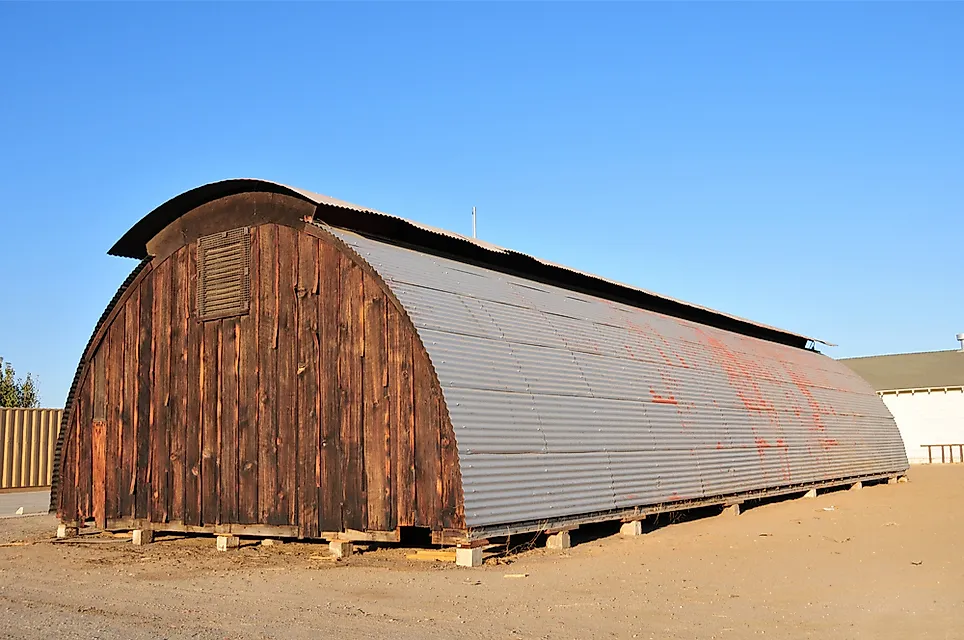What Is a Quonset Hut?

A Quonset hut is a simple semicircular prefabricated structure made from corrugated steel. The huts were first developed in the United States in 1941 during the Second World War as housing units and storage facilities for US Navy troops. They were named Quonset huts after their first assembly site, Quonset Point, (Davis Ville Naval Construction Battalion Center) in the town of Davisville, Rhode Island. Quonset huts were constructed to imitate Nissen huts, which were introduced by the British during the First World War.
Design
Quonset huts were first manufactured in the United States to cater for the need of a multi-purpose simple structural unit that could be transported easily. The original design imitated British Nissen huts and were made from corrugated steel with the ends covered in plywood that included doors and windows. The inside was shielded with hard-pressed timber linings and a wooden floor. The structure was placed directly on the ground with a wooden or concrete floor. Although the first structures were made from non-strategic steel, they were replaced with high-quality galvanized steel to prevent rusting and ensure longevity. The flexible open space allowed the huts to be used as barracks, latrines, offices, medical facilities (including isolation wards), housing units, and bakeries.
History
When the US took over the island of Guam during the Second World War, construction commenced in the hopes of transforming the island into a strong military base capable of raiding the Japanese mainland. In order to cater for the sizeable arrival of troops, temporary structures were needed and Quonset huts turned out to be important in Guam. Quonset huts were easy to assemble and required no skillful expertise to construct. The standard measurements were sixteen feet by thirty-six feet, with an eight foot radius.
Roughly 170,000 huts were built and used during the Second World War. However, the high maintenance of the huts, especially in places like Guam, led to a decline in popularity. The semicircular shape made it hard to add additional structures due to the lack of vertical surfaces. They also became disreputable due to the excruciating heat that would accumulate inside. Corrosion became a key issue as the heavy debris and heavy rains in the island enfeebled the tin walls.
Modern-Day Quonset Huts
Despite declining popularity, Quonset huts played a significant role in classic country music and were considered the root of rock and roll. In the late fifties, Owen Bradley set up one of the most successful music recording studios in history by assembling a Quonset hut building in Nashville, Tennessee. The arched walls of the hut provided an outstanding acoustic background that was preferred by famous country music artists like Patsy Cline and Johnny Cash.
Over the years, the original design of Quonset huts has changed, but they still meet the initial goal of providing an all-purpose prefabricated structure that can be assembled effortlessly and shipped anywhere. The arch shape of the huts make them the strongest architectural structures able to withstand blizzards and hurricanes. Their strong security features have made them popular with car dealerships, as housing units, as well as movie theaters.











